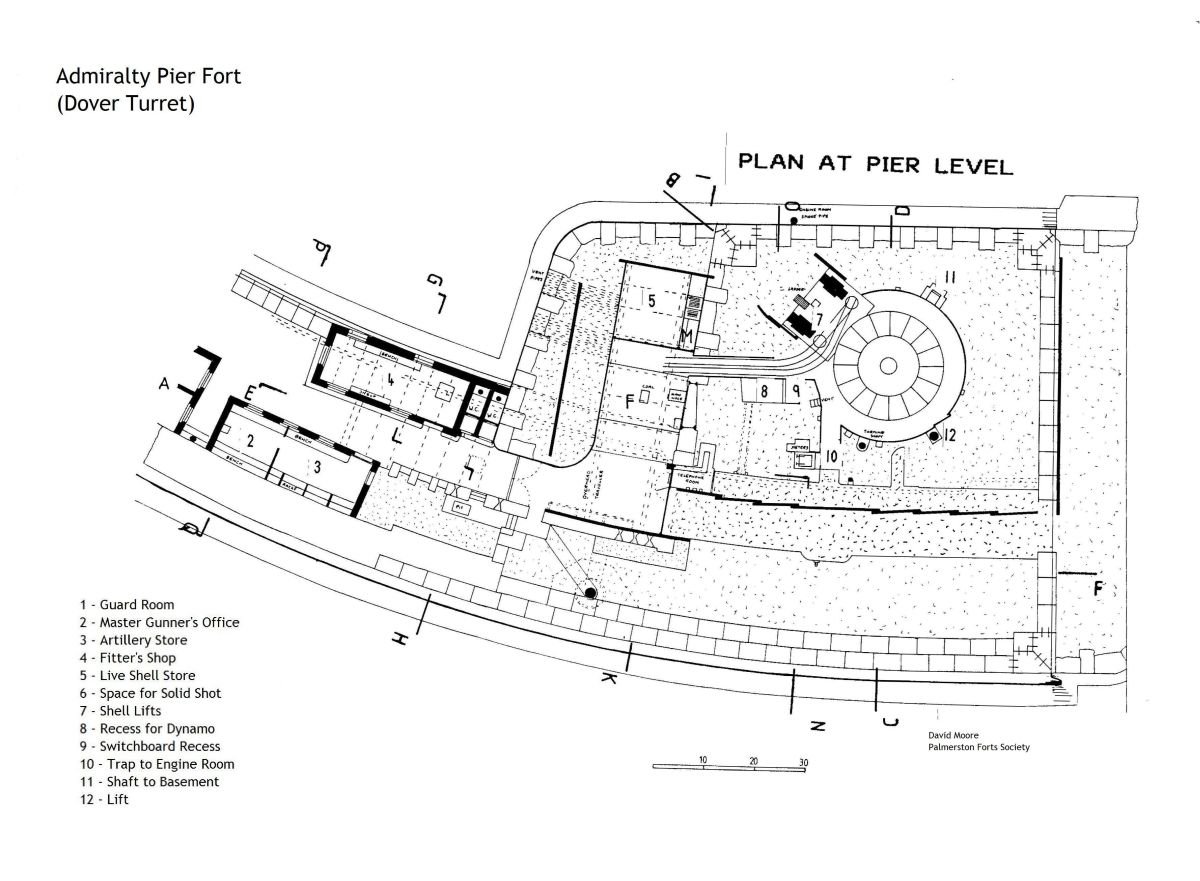Dover Admiralty Pier Turret
Admiralty Pier Fort, usually known as Dover Turret, was designed in 1870 after the Royal Commission report some ten years earlier identified Admiralty Pier as a very desirable place for an enemy to dock and unload and it should therefore be fortified. The design approved was for a turret which would house two very large guns at the end of the pier. The guns would eventually weigh some 81 tons each, and had to be specially made and tested as the largest guns to that point were 38 ton RMLs. By 1881 the guns had been delivered to Admiralty Pier, using even more equipment which had to be specially brought in. They were eventually mounted by May 1882.
The entrance to the Fort was at quay level; a wide passage ran through the fort, with two smaller passages leading off to the left. The first led to the circular-shaped basement which had the turret’s plinth in the middle. Also in the basement where the shell and ammunition hoists, which both led up to the loading chamber. The second smaller passageway led to the magazine, which consisted of three linked chambers (one for shells, one for solid shot and the third for powder cartridges) with a lighting passage alongside.
Work continued in and around the Fort, with the original rifle flanking gallery enclosed within the walls of the fort and the addition of ancillary buildings. In 1885 a new shell store, cartridge store and coal bunker were added and the original magazine was filled in with concrete.
By 1892 the Turret was down-graded to Second Class and by 1903 the Navy had it listed as “To Be Sold”.

Location: Dover Harbour
Date Of Visit: 30/03/11
More Info: Owned by Dover Harbour Board







